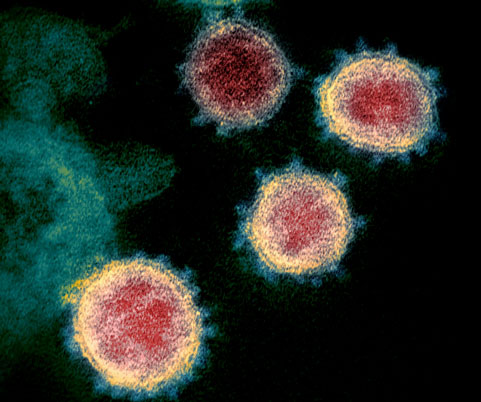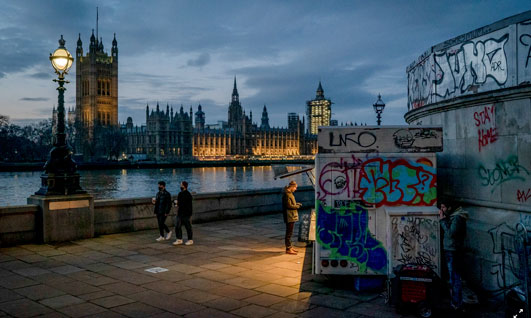Biology 101 of Virus Mutation
The coronavirus mutation in London has set off a race between scientists and journalists to understand the immediate and long-term implications. Charles Darwin told us that species that survive (fittest) are the ones that mutate, change, and adapt to their environment. They soon become the dominant species. Modern-day scientists like Richard Dawkins [“The Selfish Gene“] took Darwin’s theory from the fauna-flora level to the cell – chromosomal-DNA level to show the same: agents mutate, change form – characteristics in order to adapt and survive. Once they do, they soon become the dominant form through highly fecund replication.
A viral agent is a perfect example for mutation. It is a missile coded for survival. While it unwittingly kills its host through its parasitic means, this is not its intention because to thrive – its sole objective, its needs living hosts. But as it seeks to find available hosts in a highly saturated population (already hosting), it mutates, changes form and characteristics to expand its options for thriving. The coronavirus has done precisely that.
Virus Mutation in London and South East England

This new coronavirus mutation, its new variant is now prevalent in the south-east of England. Health Secretary, Matt Hancock, expressed concerns earlier this week about this variant. He announced that a large swath of the south-east would be placed under the most stringent, tier 3 – very high alert, restrictions. The Greater London Area has been back in lockdown (tier 3 ) since Wednesday. A tier 4 or higher might be announced if things get out of control
Hancock told the House of Commons on Monday that cases of the variant were found in almost 60 areas. He said:
Over the last few days, thanks to our world-class genomic capability in the UK, we have identified a new variant of coronavirus which may be associated with the fastest spread in the south-east of England.
British Health Secretary Matt Hancock
British Prime Ministers Boris Johnson summoned his cabinet ministers for an emergency meeting on Friday to discuss how to tackle the emerging situation. As its propagation is so widespread and deep in the south-east (Greater London Area), the coronavirus has now mutated to find new hosts. It is also transmitting (replicating) at a higher level (more fecund and contagious).
Professor Sir Mark Walport, a member of the government’s scientific advisory group for emergencies (Sage), said there was a real possibility that the strain could have a “transmission advantage.”
What happens with viruses is they do naturally mutate all the time and the ones that are likely to do well are the ones that increase transmission,” he told BBC2’s Newsnight. “We know that this is a new variant, it has been seen in other countries but it seems to be quite widespread which suggests that it has got a transmission advantage. Scientists are working extremely hard to work out what is going on. But it does definitely seem possible that this transmits more easily. It will make the social-distancing even more critical.
Professor Sir Mark Walport of Britain’s scientific advisory group for emergencies (Sage)
Initial reports are that several mutations (subtle genetic modification in its code) have been discovered – improving the frequency and intensity of its spread. As they continue to investigate, government scientists have presented new evidence to ministers about the behavioral-pattern of this variant. A government official said, “There are concerns that it is more transmissible than the existing strain – and that sense is hardening.” In other words, these new strains might be more infectious, spreading easier.

Among possible government reactions are restrictions on travel between the south-east, including London, and the rest of the country, as cross-UK travel in the run-up to Christmas holiday pose particular threats of spreading this country-wide. While awaiting announcements of its plans, government ministers have insisted that no decisions have been made. Avoiding any inducement of public panic must be topping the list of the government’s concerns as it seeks to calm the public’s angst.
I must stress at this point that there is currently nothing to suggest that this variant is more likely to cause serious disease and the latest clinical advice is that it’s highly unlikely that this mutation would fail to respond to a vaccine. But it shows we’ve got to be vigilant and follow the rules and everyone needs to take personal responsibility not to spread this virus.
Health Secretary Matt Hancock
But as confidence in Johnson’s government has waned since the beginning of the U.K.’s coronavirus pandemic, this is hardly reassuring. During Monday’s Downing Street press conference, Prof Chris Whitty, England’s chief medical officer, said there was no evidence that the symptoms are different or worse or that different coronavirus testing might be required. Other experts have poured cold water on this position. At Monday’s press conference, Prof Whitty had also denied that London and surrounding areas were going bac tier 3 lockdown because of the new variant. But by the end of the week, it appears that indeed it was.
Update 12/18: Prime Minister Boris Johnson has just announced a tier-4 lockdown (highest level alert) for London and the greater south-east. The new strain of the coronavirus mutation is said to be responsible for 60% of new transmission in the south-east in the last few weeks. It is said to contain 23 different genetic changes. It transmits up to 70% faster than the original virus – driving up the “R” (reproduction) coefficient to between 0.4 and 0.93.
Although the early word is that it appears no deadlier than the normal strain, this might prove fallacious because increased transmission of a smart cell could also mean increased or more potent viral loads. In any case, the end-results portend the same – faster and higher infection rates leading to higher hospitalization rates – and, therefore, possibly higher death rates in the coming weeks. As for vaccines, there is nothing to indicate that the new strain will defy them. But again, it is too early to be sure either way.
As Britain has some of the best genome sequencing capabilities globally, it caught this mutation after analyzing rapid spikes in infection rates in certain areas. Therefore, it is likely that undetected coronavirus mutations are happening worldwide – including in the United States and the rest of Europe.
Indeed, countries like Denmark are now indicating that they see this new strain appear as well. Reminiscent of 80s-era Bovine Spongiform (“Mad Cow Disease”) “Britstriction” bans on travel from Britain are now going up all over Europe and elsewhere – as far away as in El Salvador.
This in not just British problem.
If you like this story, please subscribe and share, if possible
